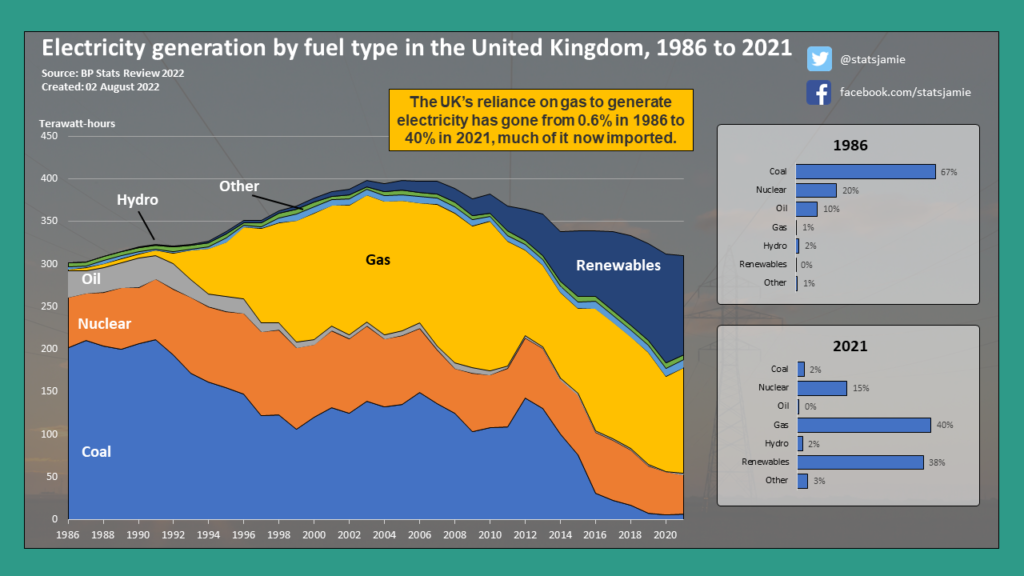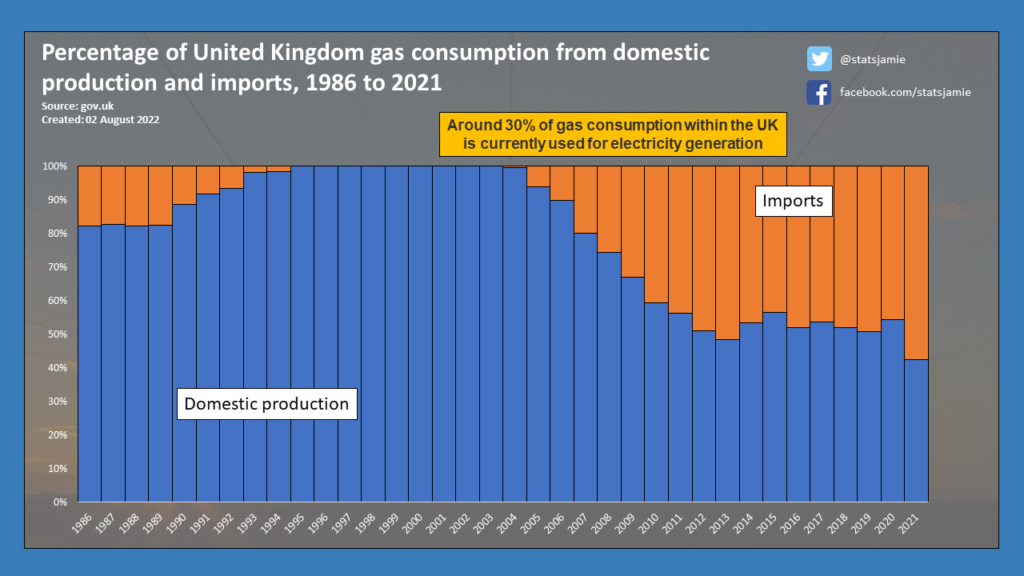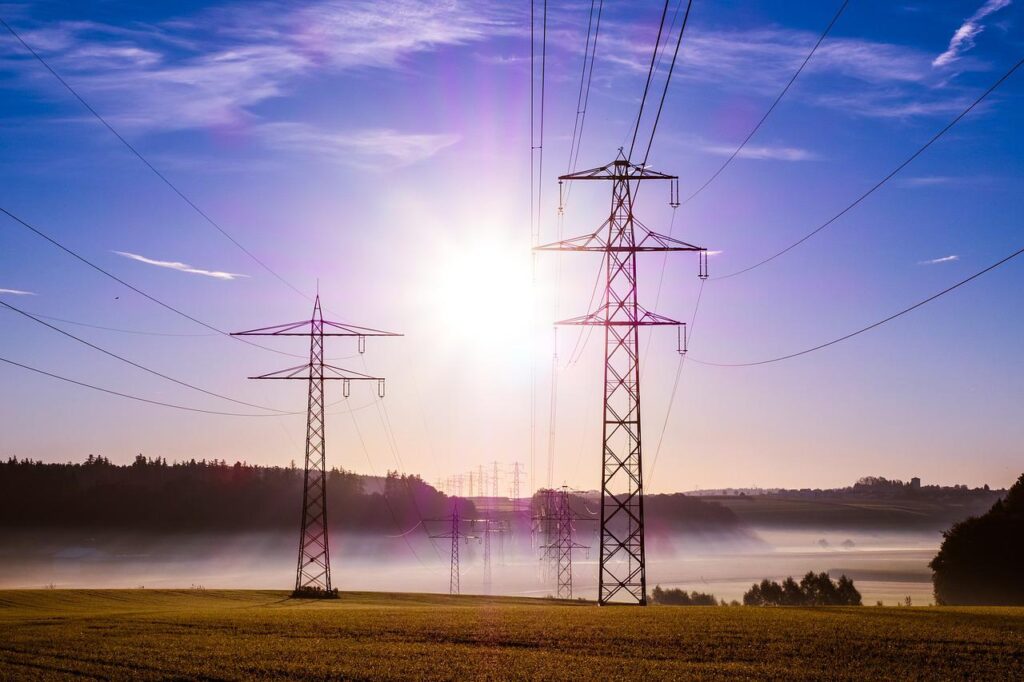Over the past 30-40 years, the UK has moved away from coal to create electricity, replacing it with mainly gas and renewables. But renewables have increased nowhere near enough to power the UK, leaving the UK reliant on gas to create 40% of the UK’s electricity, driving high energy prices.
From 1995 to 2004, North Sea gas was enough to provide the gas contribution to power the National Grid. But since 2005, the UK has increased imports with 2021 seeing imports exceeding domestic production for the first time. As UK households see record energy bills, and they are set to rise further this Autumn, the UK’s increasing shift towards foreign gas for electricity is a key factor behind record bills.
The UK’s reliance on gas to generate electricity has gone from 0.6% in 1986 to 40% in 2021
Back in 1986, two-thirds of UK electricity generation came from coal, with 20% from nuclear, 10% from oil, and 0.6% from gas. Fast forward to 2021 and the clamor for cleaner energy, just 2% of electricity generation came from coal, 40% from gas, 38% from renewables, and 15% from nuclear.
So our mix has seen a reduction in nuclear powering the National Grid, near abandonment of coal, and eradication of oil. But renewables have not plugged the hole created by reducing coal, and less domestic gas production has left the UK exposed to foreign shores for our energy.

In 2021 the UK used more imported gas than domestically produced for the first time ever
Around 30% of the total UK gas supply is used to generate electricity, with 37% used domestically to heat homes and the remaining 33% across industry and services. But what has changed over the past 20 years is the reliance on importing gas to meet demand. With the UK now importing more gas than what we produce domestically, this exposes us to world markets, with no opportunity for Government regulation, not only for domestic gas use but also for electricity.
So households are seeing increases in their gas bills and the double whammy of increases in electricity bills. This would not be the case had the UK not moved to such reliance on using gas when moving away from coal. There should have been a plan when North Sea production fell to replace this with other domestic sources.

Conclusion
Countries around the world continue to expand their use of coal with China increasing its use to generate electricity by 2000% since 1985. I previously wrote that if the UK got to net zero overnight, it would make a negligible difference to world Co2 emissions. The rapid increase in energy prices for households over the past year, which will continue this Autumn and Winter has brought home the financial cost of cleaner energy. This is at a time when major countries around the world continue to burn coal, at an increasing amount. Of course, some of this is because countries such as the UK have outsourced manufacturing to countries like China and then import the products – not very eco-friendly.
In pursuing cleaner energy production, the UK has exposed itself to worldwide energy markets. The UK will no doubt continue expansion into renewables, although in 2021 we saw the renewable mix of electricity supply fall because of unfavorable weather. The next Prime Minister needs to get a handle on energy security and, if pursuing fracking, needs to ensure this is a domestic resource, used domestically, and not thrown onto international markets for the highest bidder. This may start to reduce the high energy prices that I fear we may see for years to come.
Follow me over on Twitter, Instagram, Facebook, Tik Tok, or Gettr for my daily updates, or read my recent blog looking at how banning Novak Jokovic from the US Open is not scientific.

